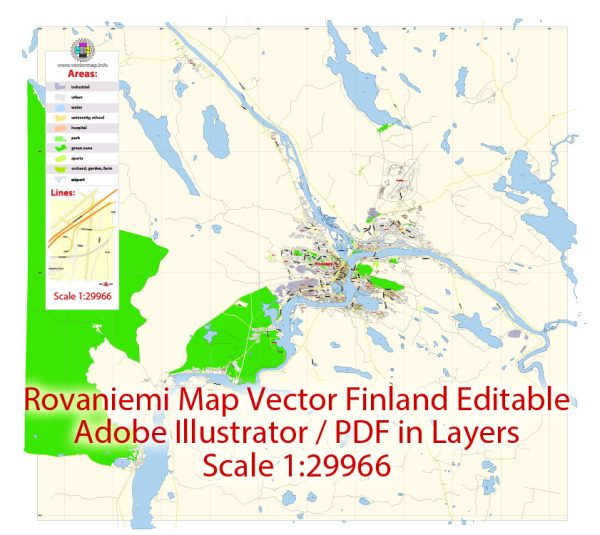Rovaniemi, located in the northern part of Finland, is the capital of Lapland and is known for its unique and distinctive architecture. The city’s architecture is influenced by its location within the Arctic Circle, as well as its history and cultural heritage. Here is a description of the architecture in Rovaniemi:
- Modern Design: Rovaniemi’s architecture often incorporates modern and contemporary design elements. The city has undergone significant redevelopment and urban planning, particularly after it was largely destroyed during World War II. As a result, many of the buildings in the city are relatively new and reflect modern architectural trends.
- Wood and Glass: Traditional Lappish elements, such as the use of wood and glass, are often integrated into the modern architectural designs. Wooden structures, particularly in the form of log cabins, are common in Rovaniemi, both for residential and commercial buildings. Glass is frequently used to maximize natural light and showcase the surrounding natural beauty.
- Practicality and Sustainability: The architecture in Rovaniemi is designed to withstand the harsh Arctic climate, with well-insulated buildings and energy-efficient solutions. Sustainability is also a key consideration, as the city seeks to minimize its environmental impact.
- Unique Structures: Rovaniemi is famous for its unique and iconic structures, such as the Arctic Circle Center and the Santa Claus Village. These buildings often incorporate imaginative and whimsical design elements, reflecting the city’s role as the “Official Hometown of Santa Claus.”
- Cultural and Historical Preservation: Rovaniemi places a high value on preserving its cultural and historical heritage. Some older buildings that were spared from destruction during World War II can still be found in the city. These structures often feature a combination of traditional Finnish and Lappish architectural elements.
- Northern Lights and Nature: The architecture in Rovaniemi is designed to allow residents and visitors to enjoy the natural beauty of the region, including the Northern Lights. Many buildings have large windows or outdoor viewing platforms to take in the breathtaking Arctic scenery.
- Public Saunas: Saunas are an integral part of Finnish culture, and Rovaniemi is no exception. The city features various public saunas that offer a unique architectural experience, blending modern design with traditional sauna elements.
- Ice and Snow Architecture: During the winter months, Rovaniemi is famous for its ice and snow architecture, including the SnowCastle and ice hotels. These ephemeral structures are constructed annually and showcase the city’s dedication to celebrating the Arctic environment.
In summary, Rovaniemi’s architecture is a blend of modern design, traditional Lappish elements, and a commitment to sustainability and practicality in a unique Arctic setting. The city’s architecture reflects its cultural heritage and natural surroundings while embracing contemporary design trends.


 Author: Kirill Shrayber, Ph.D.
Author: Kirill Shrayber, Ph.D.